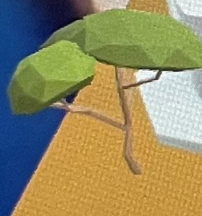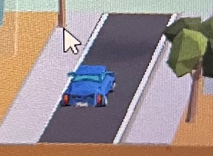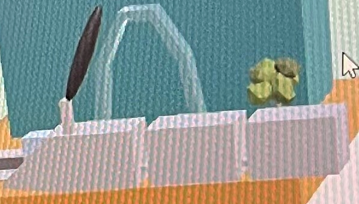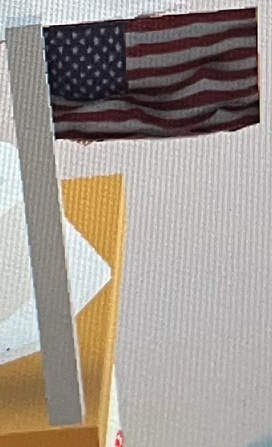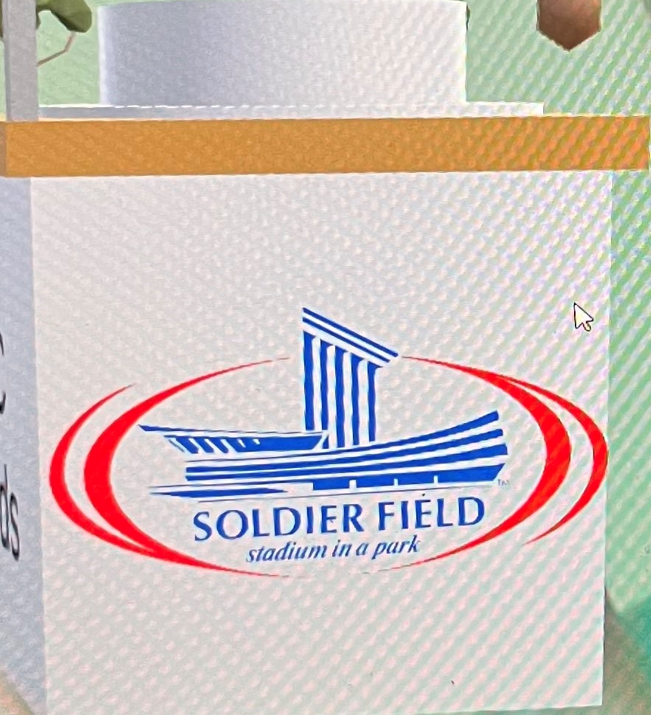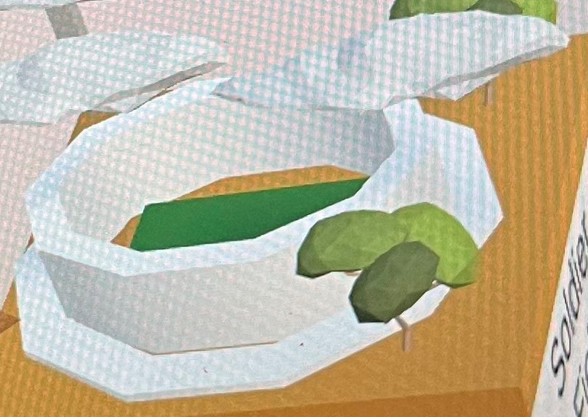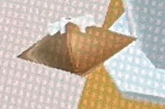James Kim
This is my website for CS 428, Virtual, Augmented and Mixed Reality.
Project 1
Introduction
This project uses two Augmented reality (merge and class) cubes called knickknacks, which displays a 3D model when shown to a camera with a AR viewing program. For this project, we had to create a knickknack that displayed a location or attraction. I picked Ogilvie Transportation Center and Soldier Field, both in Chicago Illinois. When these cubes are shown, they will display OTC and Soldier Field, mapped over their respective cubes. They will also show the weather, time, name, and a logo for each knickknack.

This is the link to the 5 minute youtube video! Youtube Link
How to set up
-
Create an account and install Unity 2021.3.6f1.
-
Create an account and generate a Vuforia license key. Vuforia 10.9.
-
Install Git and clone the project from the GitHub repository in Git. GitHub link
-
Open the Unity hub and add the project folder that was cloned.
-
Open the project in Unity, and add the Vuforia license key in the properties of ‘AR camera’.
-
Click the play button at the top of the screen, and hold your cubes in front of the camera. At this point the virtual cubes should show up!
Sources for assets
Ogilvie Transportation Center knickknack
Models and assets online
This tree asset is from Broken Vector. Link
These roads and sidewalk assets is from 255 pixel studios. Link
This car asset is from Nextlog Art Factory. Link
This is the metra logo used from this website. Link 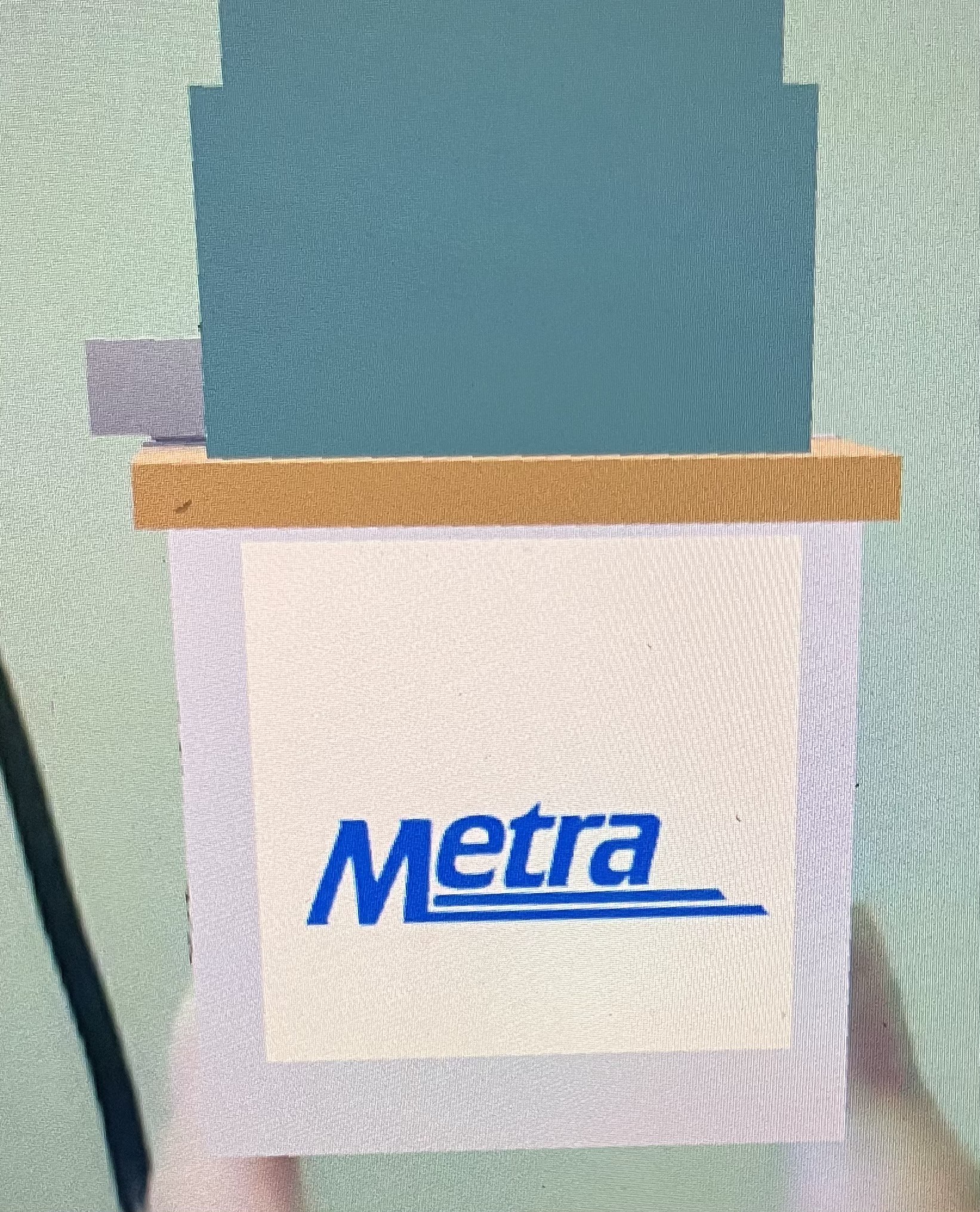
The audio is train station sounds from this youtube link. Link
Models created
This is the Ogilvie Transportation Center building.
This is a train.
Soldier Field knickknack
Models and assets online
This tree is a diffrent tree from Broken Vector. Link
These are clouds from The Fallout Nerd. Link
This flag is from Sam Guilmard. Link
This is the soldier field logo used from this website. Link
The audio is cheering noises from this youtube link. Link
Models created
This is the Soldier Field Stadium.
This is a football.
Discussion
I think that things like this could be immensely popular in the future. Having eye wear that can show AR objects without needing to pull out a phone or some other sort of device can make the technology seem like an aid, rather than something intrusive or difficult to use. For example, imagine not having to pull out a menu at a restaurant, and instead seeing the menu in your own eye wear. This could make the need for physical menus less common. This technology could also be extremely useful for entertainment purposes. Take for example pokemon go. Currently, you need to pull out your iphone before you can do any augmented reality things. However, if somehow this game could be built into the eye wear, it could make for a more immersive experience. I can also see this type of eyewear replacing signs or descriptions, like a bubble of text showing rather than having physical writing. We could also replace inputs like keyboards or mice with this technology, by having the eyewear detect our fingers or hands to simulate typing or pointing. These knick knacks that we have made are more for entertainment rather than something practical to use so far. However, something similar to a souvenir could be made, like how these cube knickknacks display a place. Of course when talking about entertainment, there are also board games that could benefit from this. For example, chess or checkers could no longer be physical objects, but rather virtual ones. The eye wear could start to display a game of chess or checkers once it detects a chess or checkers board. We could also replicate objects in games. For example, in a game where the main player wields a sword, we could have the player wield a AR-detectable sword made out of a material that could be realistic to a sword, without having the dangers of an actual sharp sword. This technology could also be used for educational purposes. Right now, schools issue an iPad to students to enhance their learning. From firsthand experience, I know that the iPad was a great help to my education while in high school. I believe that something of similar impact could be made if we used eye wear that augments reality. One example would be to have a virtual whiteboard, rather than a physical one. A teacher could draw and point on the virtual whiteboard with their hands, and the students would be able to see it, or even zoom in on text on the whiteboard. We would have no need for physical objects like markers, erasers, or projectors. It could also give students more ability to ask questions in class. For example, if the eye wear detects that a student has a question or has to go to the restroom, an icon could appear over the student’s head for the teacher to see. This would not interfere with the flow of teaching the class, and the teacher would know what the student is up to while teaching. These examples I’ve talked about can seem small, but I believe that all of these types of examples combined can make eye wear that augments reality, a common thing to use in the future.
